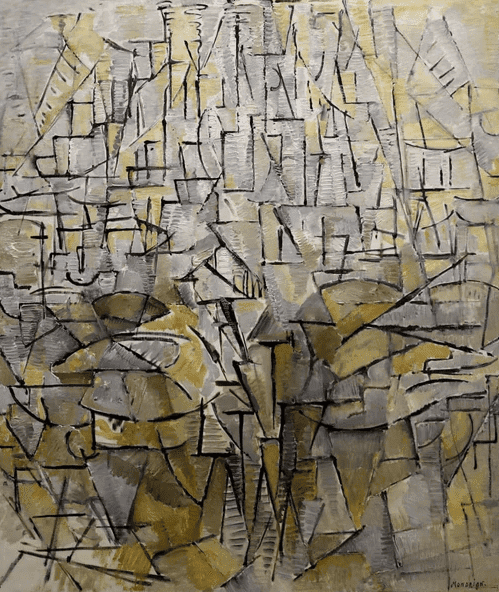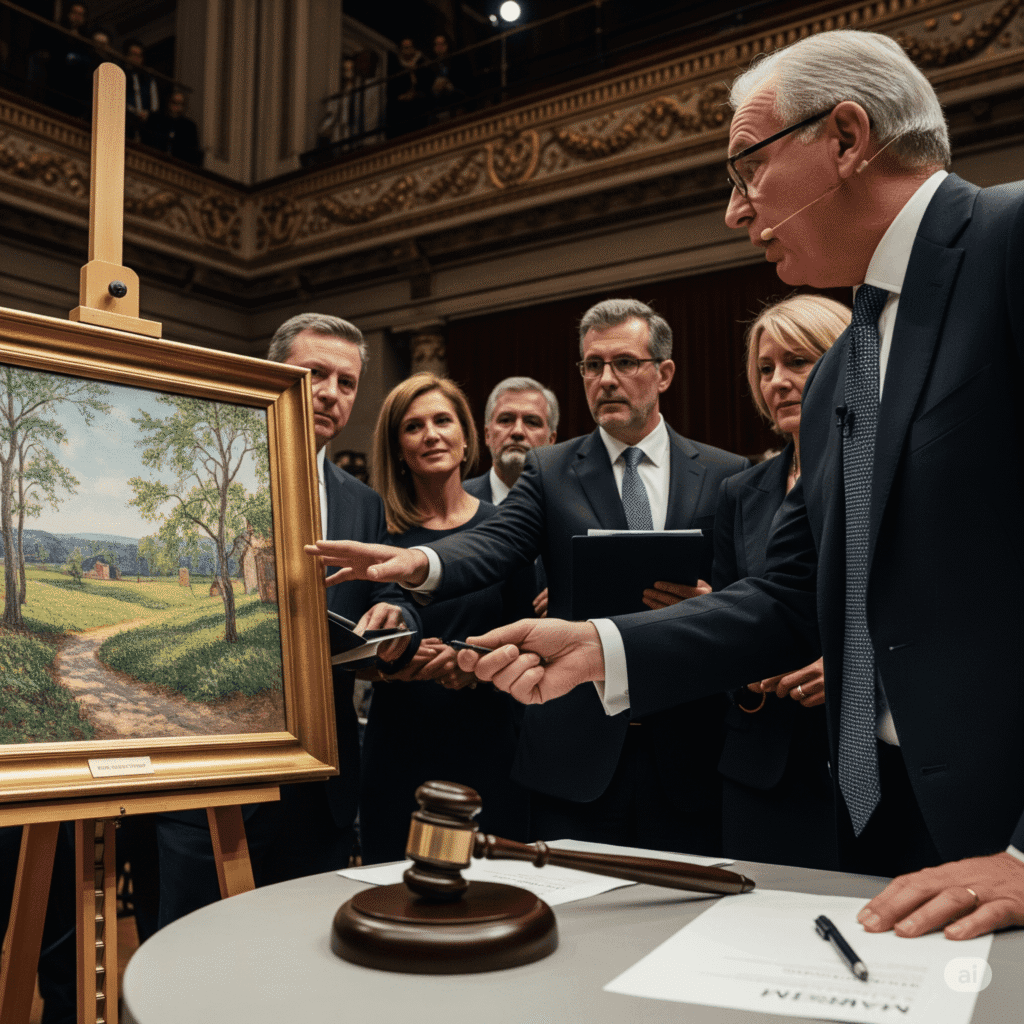How Street Art is Taking Over the Global Art Scene
Introduction
Once considered a rebellious act of defiance, street art has evolved into a celebrated force in contemporary visual culture. From urban alleys to auction houses, from political walls to gallery installations — street art is taking over the global art scene. It is no longer confined to the fringes but embraced by museums, brands, governments, and collectors alike. In 2025, street art is not just surviving — it is thriving, defining, and revolutionizing how we perceive public space, creativity, and community narratives.
The Transformation of Street Art: From Vandalism to Valuation
Historically, street art was synonymous with graffiti — unsanctioned, anonymous, and often illegal. In cities like New York, São Paulo, Berlin, and Johannesburg, street art was born in resistance and rebellion. It was a voice of the marginalized, a visual cry for justice, belonging, or raw expression.
But over the past two decades, the perception of street art has shifted dramatically. What was once dismissed as vandalism is now auctioned at Sotheby’s. Murals are now central to city branding, tourism, and social activism. The rise of artists like Banksy, Shepard Fairey, and Vhils has brought global legitimacy and commercial success to this once-underground art form.
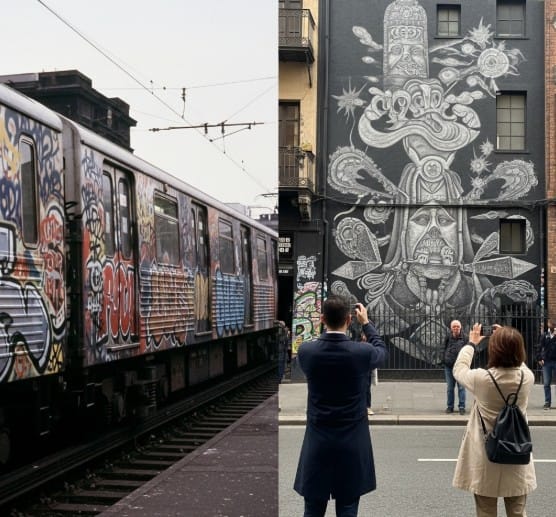
Why Street Art is a Global Phenomenon
One of the defining traits of street art is its universality. Unlike gallery art that may be limited by geography, wealth, or class, street art is inherently public. It exists in open, often unexpected spaces, accessible to everyone, regardless of background.
This has allowed street art to become a global language. Artists from different countries may not speak the same dialect, but they paint in a common tongue — expressing social concerns, identity, and imagination. Whether it’s a political mural in Palestine, a feminist wheatpaste in Argentina, or a 3D illusion piece in France, the global appeal of street art lies in its immediacy, relevance, and shared humanity.
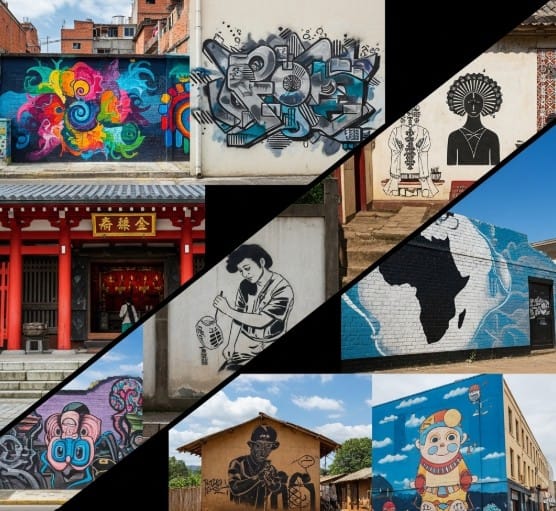
Key Cities Fueling the Street Art Movement
Street art flourishes in cities that encourage public creativity. Some of the most vibrant urban centers have become open-air galleries, attracting artists and fans from around the world.
- Berlin, Germany: Known for its raw political edge and DIY ethos, Berlin is a haven for muralists, paste-up artists, and stencil pioneers.
- Buenos Aires, Argentina: Bursting with political commentary and artistic passion, Buenos Aires has legalized and encouraged street art in many of its neighborhoods.
- Melbourne, Australia: Its laneways, especially Hosier Lane, are iconic spots for global street artists and photographers.
- Lisbon, Portugal: With artists like Vhils carving portraits into walls, Lisbon’s blend of history and contemporary art makes it a street art capital.
- Mumbai, India: Projects like the Mahim Art District and Sassoon Dock Art Project have made street art a growing cultural voice in India.
- New York City, USA: The birthplace of modern graffiti and still one of the most influential scenes in the world.
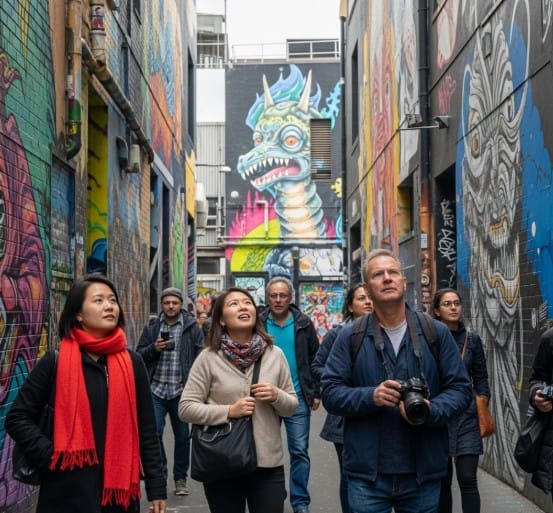
The Politics and Power of Street Art
At its core, street art is not just decorative — it’s deeply political. It has long been a platform for activism, protest, and awareness. From anti-capitalist slogans to climate change murals, street art transforms passive walls into powerful statements.
In 2025, climate justice, LGBTQ+ rights, racial equity, and indigenous sovereignty are some of the most dominant themes in global street art. During protests or social movements, street art often becomes the voice of the people — unfiltered, urgent, and direct.
Campaigns like #PaintBack in Germany and “Art for Justice” murals in the US use visual art to reclaim public space from hate and inject it with hope.
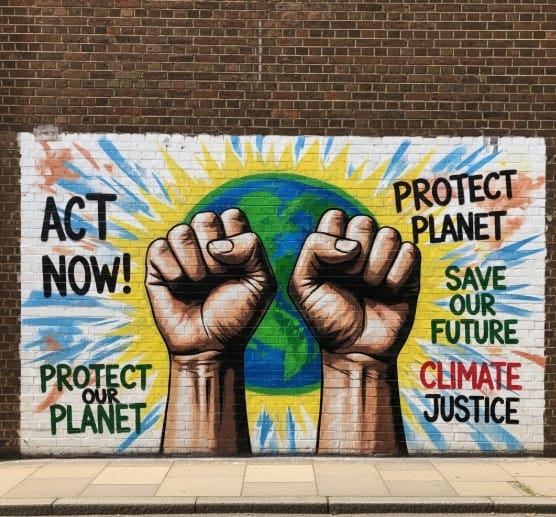
How Technology Is Elevating Street Art
While street art has always been analog — brushes, sprays, and stencils — the digital era has expanded its reach and evolution. Artists now incorporate:
- Augmented Reality (AR): Murals that come alive through a smartphone app, revealing motion, stories, or hidden elements.
- Projection Mapping: Temporary “graffiti” made with light, allowing for powerful animations on public buildings without leaving a trace.
- NFT Street Art: Artists mint their murals as NFTs, allowing collectors to own digital certificates tied to physical works.
- Drones and AI: Some artists use drones for large-scale creations or AI tools to plan intricate compositions.
A perfect example of AR-infused street art is the WOM Collective in London, which uses technology to tell untold stories of women in public spaces.
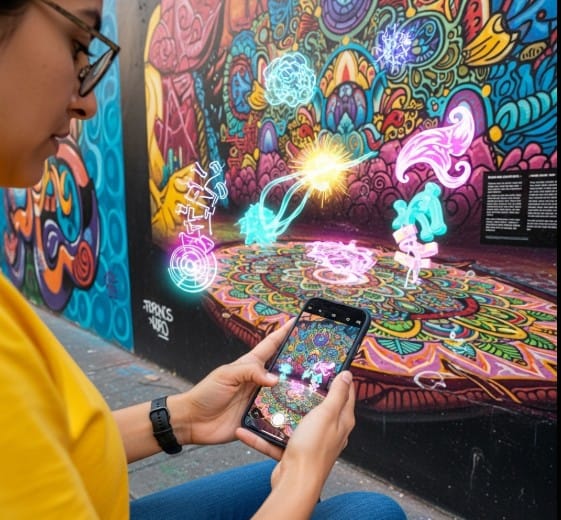
Street Art Meets Fine Art: Blurring Boundaries
The walls that once separated street art from fine art are dissolving. Today, many street artists exhibit in prestigious galleries and museums. Works that once lived on brick are now preserved on canvas, wood, or digital installations.
Art fairs, from Art Basel to Frieze, are including more urban art installations. Museums like the Museum of Graffiti in Miami and Urban Nation in Berlin are dedicated entirely to preserving the culture and evolution of street art.
At the same time, some street artists resist commercialization, insisting on anonymity and ephemeral expression as core to their identity. The duality between the street and the gallery continues to spark debate — what happens when rebellion becomes marketable?
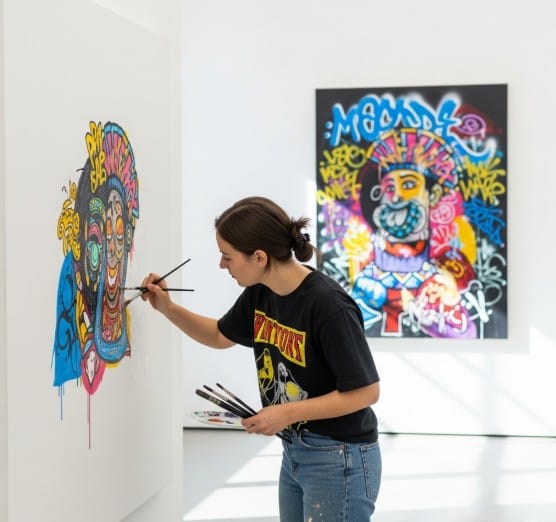
Brands and Street Art: Authenticity or Appropriation?
With its edgy, youthful energy, street art has become a magnet for brands. From sneaker companies to luxury fashion houses, brands are commissioning murals, graffiti collabs, and street-style visuals to build street credibility.
But this trend walks a fine line. While some collaborations empower artists and support communities, others are accused of cultural appropriation and exploitation. When street art becomes just another tool for corporate marketing, its raw authenticity is at risk.
Artists like Futura, KAWS, and RETNA have successfully bridged both worlds — maintaining creative integrity while collaborating with brands thoughtfully.
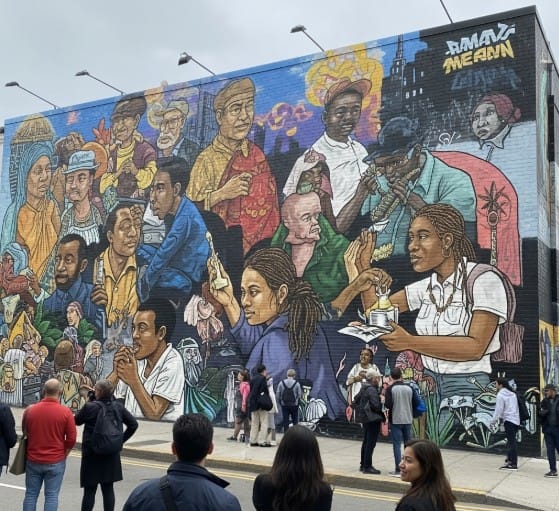
The Role of Social Media in Globalizing Street Art
Social media has been a game-changer for the street art movement. Platforms like Instagram, Pinterest, and TikTok allow artists to instantly share their work with a global audience, turning local expressions into viral phenomena.
Hashtags like #streetart, #urbanart, and #muralart connect communities across languages and borders. Time-lapse videos of mural creations, behind-the-scenes clips, and interactive AR filters have become powerful promotional tools.
Many artists now plan murals with digital audiences in mind — optimizing colors, scale, and composition for photos and reels. Street art is no longer static; it lives in physical space and travels digitally.
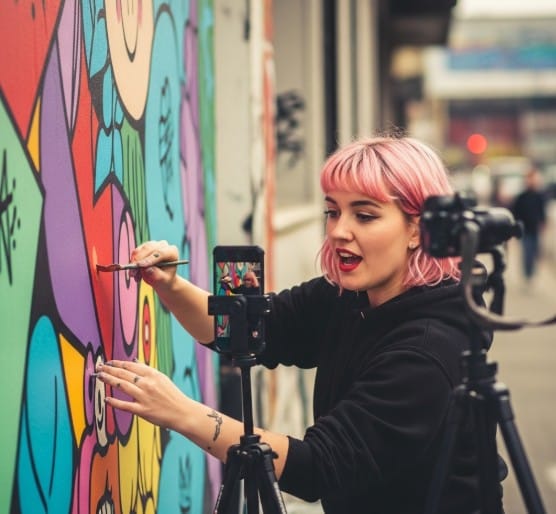
Street Art and Community Engagement
Unlike much of the fine art world, street art often originates from and serves the community. Community murals involve residents, reflect local history, and address grassroots concerns. They transform neglected spaces into vibrant narratives.
Projects like “Mural Arts Philadelphia” and “St+art India Foundation” are pioneers in this space — creating public art that heals, educates, and empowers. In underrepresented communities, street art becomes a mirror, a celebration, and a voice.
At ISKUSS, we believe in the power of art rooted in culture. Many of our curated works are inspired by mural traditions, urban symbolism, and the community-focused spirit of street art. Explore our unique collection at ISKUSS.
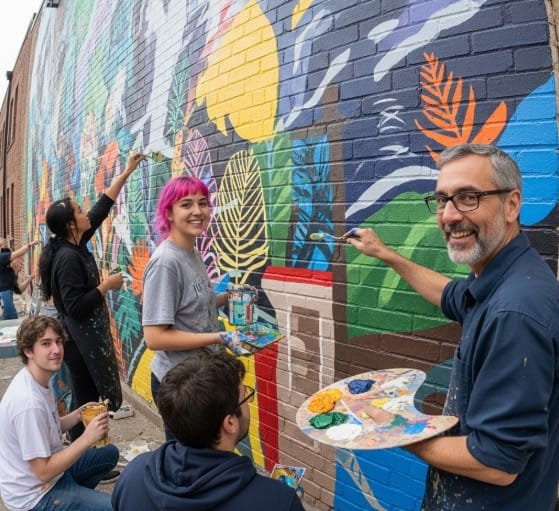
Challenges Street Artists Face Today
Despite its popularity, street art still faces serious challenges:
- Legal Risks: In many cities, street artists risk arrest, fines, or harassment.
- Gentrification: Murals beautify areas, but can also accelerate displacement and rising rents.
- Preservation: The ephemeral nature of street art means it is often painted over or damaged.
- Co-optation: As corporations and politicians adopt street art aesthetics, original messages may get diluted or lost.
The tension between rebellious roots and mainstream embrace continues to define the movement.
Where Street Art is Headed in 2025 and Beyond
In 2025, street art is not a trend — it’s a transformative movement. As urban life evolves, so too will the messages, mediums, and makers of street art. The rise of environmental consciousness, identity politics, digital hybridity, and public engagement will continue to shape this form.
Expect to see more interactive murals, multi-sensory installations, and artist collectives redefining urban storytelling. Street art will continue to reclaim space — not just physical, but cultural, emotional, and imaginative.
Conclusion: Street Art as the Pulse of the Planet
The power of street art lies in its immediacy, its honesty, and its defiance. It belongs to everyone and speaks from the ground up. As borders blur, and voices seek louder platforms, street art remains the most democratic, dynamic, and disruptive visual language of our times.
Whether you see it on the walls of Brooklyn or the trains of Berlin, in the alleys of Bogotá or the lanes of Bengaluru — street art is taking over the global art scene, one wall at a time.
To stay inspired by stories like these and discover culturally rooted artworks influenced by global movements, visit ISKUSS.
